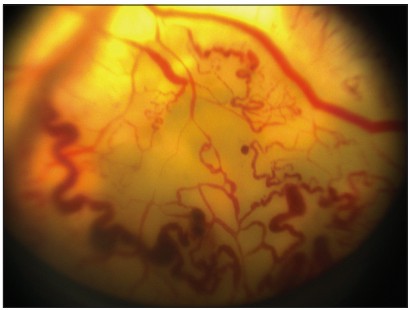- Home
- Solutions
- By Diseases
- Ocular Neoplastic Diseases
- Coats Disease

Coats disease is characterized by retinal telangiectasia and intraretinal or subretinal exudation, mostly seen in young males as an affected group. Protheragen's services in Coats Disease diagnostics and therapeutics development are designed to address the unique challenges posed by this rare retinal disease.
Coats Disease (also spelled Coat's disease) is an uncommon, idiopathic disease of the retina's blood vessels accompanied by defective formation of the vascular structures of the retina, which causes intraretinal and subretinal fluid accumulation. First described by George Coats in 1908, its primary victims are boys, and it usually occurs in one eye only. Its main features are retinal telangiectasia marked by dilated and irregular vessels that ooze fluids, resulting in exudative retinal detachment, macular oedema, and sometimes severe vision loss. The eye disorders may vary in severity and include mild symptoms of vascular manifestations to advanced exudative retinal detachment and neovascular glaucoma.
 Fig.1 Retinal telangiectasia and subretinal exudation characteristic of Coats disease. (Sen M., et al., 2019)
Fig.1 Retinal telangiectasia and subretinal exudation characteristic of Coats disease. (Sen M., et al., 2019)| Therapeutics | Targets | Description | Stages |
| Bevacizumab (Avastin) | VEGF-A | Bevacizumab is a monoclonal antibody that binds to VEGF-A, reducing vascular permeability and exudation. It is commonly used as an intravitreal injection to manage macular edema and exudative retinal detachment in Coats disease. | Approved |
| Ranibizumab (Lucentis) | VEGF-A | Ranibizumab is another anti-VEGF agent used in the therapeutics of Coats disease. It targets VEGF-A, helping to stabilize abnormal blood vessels and reduce exudation. It is often used in combination with laser photocoagulation or cryotherapy. | Approved |
| Conbercept | VEGF-A, VEGF-B, VEGF-C, Placental Growth Factor | Conbercept is a recombinant fusion protein that binds to multiple VEGF isoforms and placental growth factors. It is effective in reducing subretinal fluid and improving visual acuity when used in combination with laser photocoagulation. | Approved |
| Triamcinolone Acetonide | Inflammatory Pathways | Triamcinolone is a corticosteroid used as an intravitreal injection to reduce inflammation and exudation. It is often used as an adjunct therapy to laser photocoagulation or cryotherapy to manage macular edema. | Approved |
Disclaimer: Protheragen focuses on providing preclinical research services. This table is for information exchange purposes only. This table is not a treatment plan recommendation. For guidance on treatment options, please visit a regular hospital.
Understanding the distinct difficulties of Coats disease, Protheragen provides tailored services meant to address specific research requirements. Our staff works hand in hand with the clients to formulate sophisticated diagnostic and therapeutic approaches utilizing our vast experience and resources.




Protheragen's preclinical research services are structured to deepen the understanding of Coats Disease while formulating new therapeutics methodologies. We perform extensive research on the disease's pathogenesis with particular regard to endothelial dysfunction and abnormal pericytes as the focal point. If you are interested in our services, please feel free to contact us.
References